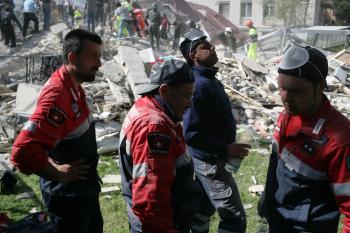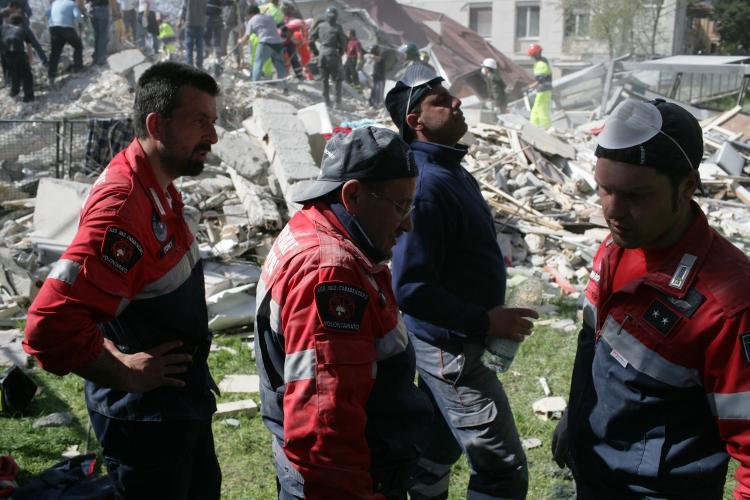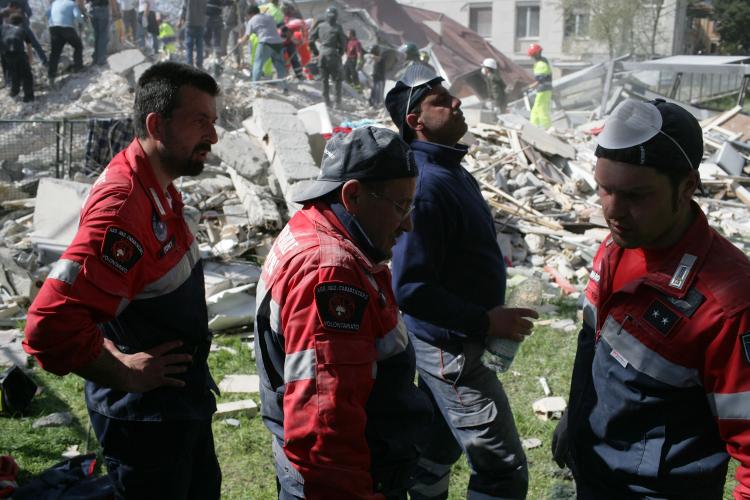A massive earthquake struck Italy early in the morning of April 6, resulting in confirmed deaths of over 150 people in the region. The quake measured 6.3 on the Richter scale and lasted around 30 seconds.
The quake struck the city of L'Aquila in the Abruzzo area of Italy. Italy’s Prime Minister Silvio Berlusconi declared a state of emergency in the region. He said that close to 1,500 people were wounded and as many as 50,000 could be homeless.
The Prime Minister canceled a summit in Moscow and flew back to Italy, and has diverted federal funds to deal with the crisis.
Nearby tennis courts and football grounds have been turned into refugee centers with tents put up to house the homeless.
Over 5,000 rescuers scrambled through rubble in the city and nearby villages and towns, most of which have had buildings flattened, with some towns “virtually destroyed in their entirety,” according to a speech from Gianfranco Fini, speaker of the Lower House of Parliament, and quoted by the BBC.
Medieval Buildings Shattered
The earthquake destroyed many Renaissance-era buildings, which represented some of the best styles of architecture in those times, such as Gothic, Romanesque and Baroque. The city was reported to have been built as a strategic battle location during the pre-Renaissance period.
The city and neighboring areas, though not frequented by tourists, were nevertheless home to ancient castles, forts and well as holy cemeteries.
Scientist Claims Prediction
Even as news of the quake spread, a minor controversy was created when an Italian scientist, Giampaolo Giuliani, claimed that he had accurately predicted the earthquake in advance.
Mr. Giuliani’s findings had been met with disapproval from L'Aquila’s mayor and he had been reported to the police for “spreading panic” for his prediction. The scientist was also forced to delete his findings from an Internet website.
“I want apologies from Boschi (Enzo Boschi, president of the National Institute of Geophysics and Volcanology,) and Bertolaso (Guido Bertolaso, the civil protection chief), on behalf of all those who died today,” Mr. Giuliani said in a statement reported by the U.K.’s Times newspaper.
Tremors had been regularly felt in L'Aquila starting in mid-January, but at that time, the Civil Protection Agency had issued a statement saying the tremors were “natural.”
Mr. Enzo Boschi, president of the National Institute of Geophysics and Volcanology, denied the claims of the prediction.
World leaders expressed condolences to Italy and the victims of the earthquake.






